Day 4
March 12th Aitcho Island (62˚24’S, 59˚47’W)
Half Moon Island (60˚36’S, 59˚55’W)
The Aitcho Islands (‘Aitcho’ standing for ‘H.O.’ i.e. ‘Hydrographic Office’) are a group of minor islands in the north entrance to English Strait separating Greenwich Island and Robert Island in the South Shetland Islands, Antarctica, which are situated between Dee Island to the south and Table Island to the north. The islands were mapped in 1935 during the oceanographic investigations carried out by the Discovery Committee, and named after the Hydrographic Office of the UK Admiralty.
Most of the names of each island were given by Chilean Antarctic expeditions between 1949 and 1951. Making part of the group are:
Barrientos Island
Emeline Island
Jorge Island
Cecilia Island, named Isla Torre by Chile
Sierra Island
Passage Rock
Morris Rock
Among the bird species found on the island are chinstrap and gentoo penguins, Southern giant petrels, and skuas. Southern elephant seals are among the larger life forms. There are also a wide variety of lichens and mosses reported.
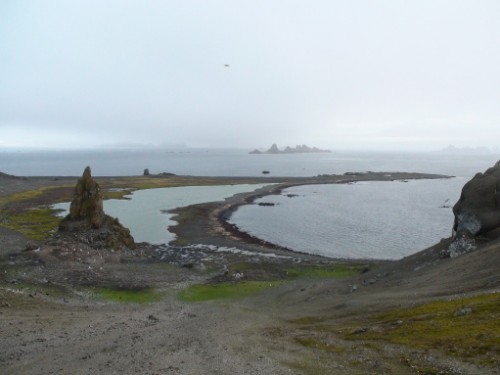
The landing was wet on a small, green island on a rocky beach in Potter Bay. This 1.5km island’s north coast is dominated by steep cliffs, reaching a height of approximately 70 metres, with a gentle slope down to the south coast. The eastern and western ends of the island are black sand and cobbled beaches. Columnar basalt outcrops are a notable feature of the western end.
Aitcho Island gave us an early taste of what the Antarctic really is. It was an excellent introduction to Antarctica with splendid scenery and wildlife. We watched both Gentoo and chinstrap penguins going about their busy lives as we walked among whale bones scattered along rocky beaches.
The entire centre of the island is covered by a very extensive moss carpet. The green alga Prasiola crispa is widespread.

We continued with the crossing of the Bransfield and Gerlache Straits. Besides the magnificent scenery of mountains, snow and ice, in Antarctica you can expect to see a wide variety of the native wildlife. Other birds to look out for were blue-eyed shags, gulls, cape petrels, skuas, snowy sheathbills and Antarctic terns. Marine mammals that you are likely to see include Weddell crab-eaters and leopard seals while orcas, humpback and mink whales may be spotted at close range.
Half Moon Island 2km long crescent shaped island between Greenwich and Livingston Islands. It has a sizable rookery of chinstrap penguins as well as nesting Antarctic terns and kelp gulls. Whales are often seen patrolling the shores, and this small island offers stunning views of surrounding mountains.
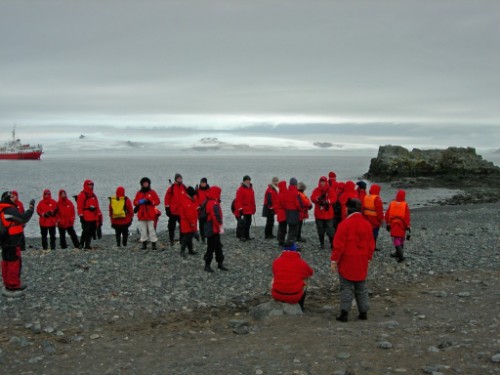
Half Moon island has a series of raised cobbled beaches along the centre and the south-eastern end of the island, which is characterised by a small hill and series of igneous rock outcrops. The north side of the hill comprises steep scree slopes with cliffs to the south and east.
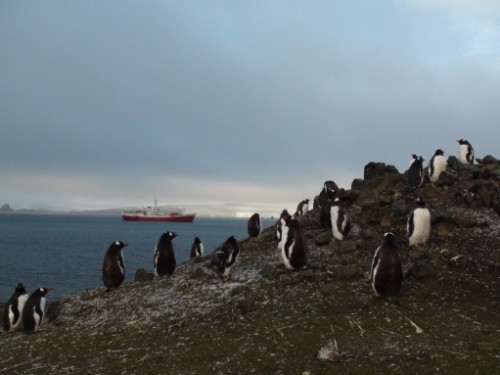
Gentoo pinguin
The Gentoo Penguin is easily recognized by the wide white stripe extending like a bonnet across the top of its head. Chicks have grey backs with white fronts. Adult Gentoos reach a height of 51 to 90 cm (20-36 in), making them the largest penguins outside of the two giant species, the Emperor Penguin and the King Penguin.
Males have a maximum weight of about 8.5 kg (18.8 lbs) just before moulting, and a minimum weight of about 4.9 kg (10.8 lbs) just before mating. For females the maximum weight is 8.2 kg (18 lbs) just before moulting, but their weight drops to as little as 4.5 kg (10 lbs) when guarding the chicks in the nest. Birds from the north are on average 700 g (1.5 lbs) heavier and 10 cm (4 in) taller than southern birds gentoo penguin reaches 75-80cm. They are the fastest underwater swimming penguins, reaching speeds of 36 km/h. The Gentoo is are built for very harsh cold climates.
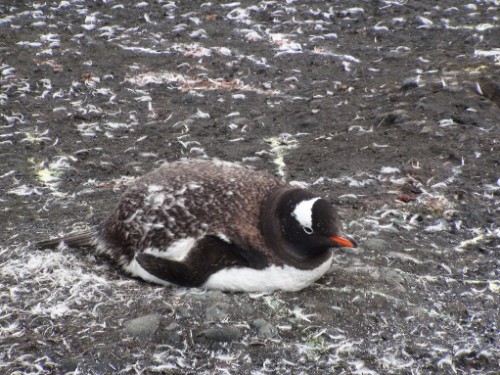
Chinstrap pinguin
The Chinstrap Penguin is a species of penguin which is found in the South Sandwich Islands, Antarctica, the South Orkneys, South Shetland, South Georgia, Bouvet Island and Balleny. Their name derives from the narrow black band under their heads which makes it appear as if they are wearing black helmets, making them one of the most easily identified types of penguin. Other names for them are "Ringed Penguins", "Bearded Penguins", and "Stonecracker Penguins" due to their harsh call.
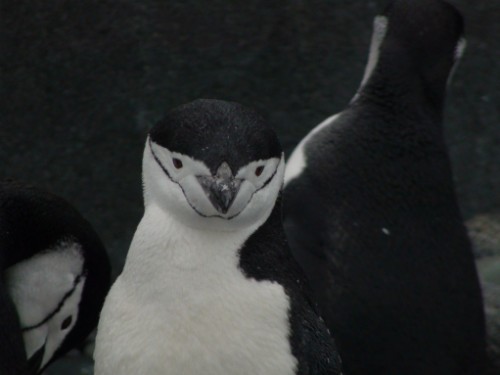
Chinstrap Penguins grow to 68 cm (27 in) in length, and a weight of 6 kg (13.2 lbs), however weight can drop as low as 3 kg (6.6 lbs) based on where the penguin is in the breeding cycle. Males are both larger and heavier then females. Their diet consists of krill (a shrimp-like sea creature), shrimp and fish.
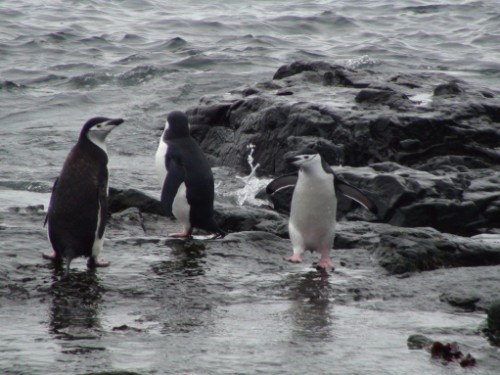
They live both on barren islands and large icebergs of the sub-Antarctic Region and the Antarctic Peninsula, however require solid, snow-free ground to nest on. The chinstrap penguin eats mostly krill and some fish, while their primary predator is leopard seals. There are about 12 to 13 million chinstrap penguins, and have an average life span of 15 to 20 years.